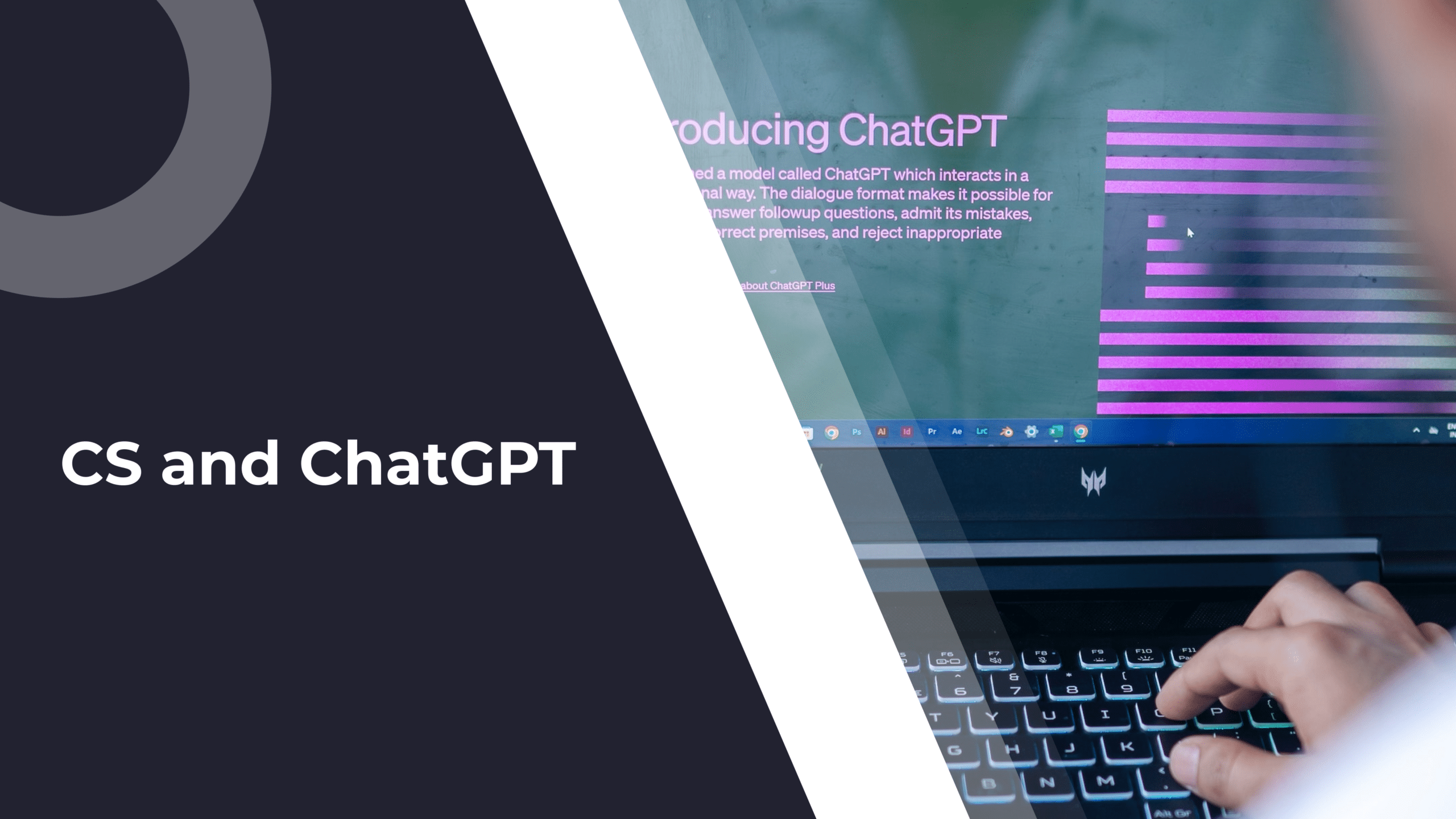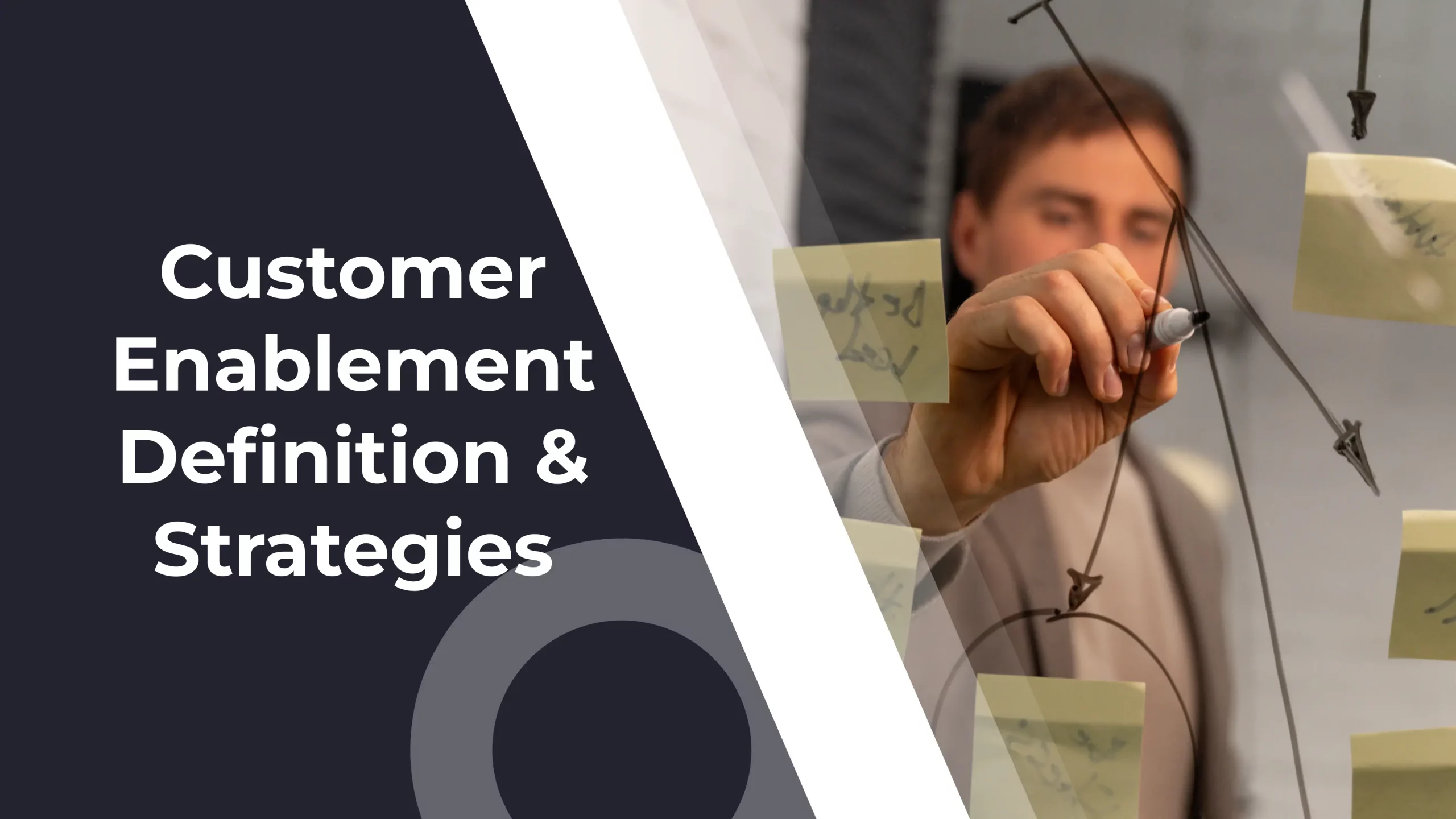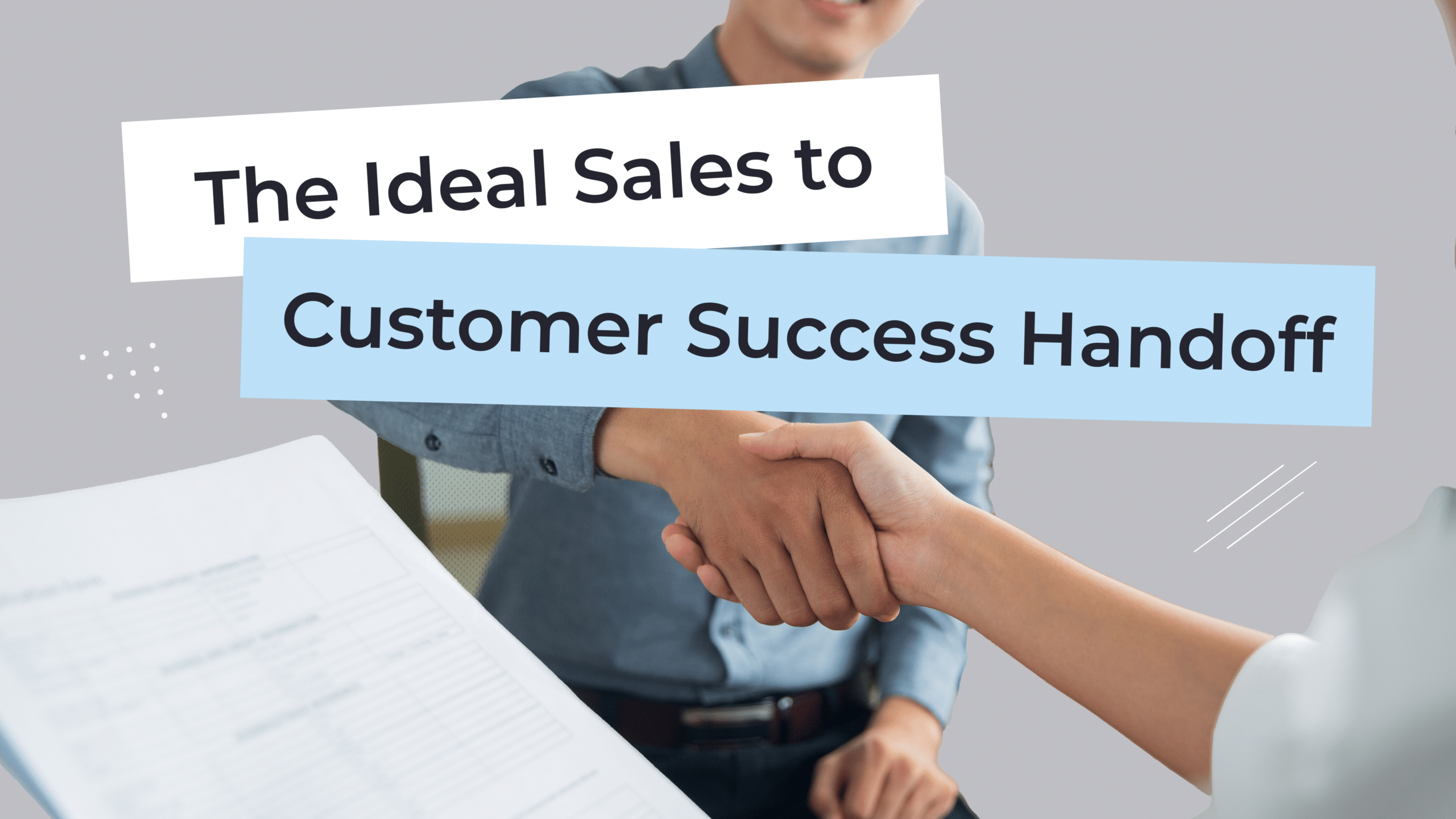In software, we’re in the business of delivering digital solutions to a diverse set of customers. Customer success software can help deliver those outcomes more effectively.
Why?
Picture this: you spend months or even years developing a product. And then a month into their lifecycle, your customers start to churn.
You wonder – how did that happen? Well, without a customer success platform, your options to get to the truth are severely limited. But how do you pick from the incredible range of customer success tools and software available? That’s what I’m here to help you with today.
Things To Consider about Customer Success Software
Customer success software started as a tool to address customer churn. It then evolved into much more than that. Today, CSPs such as our own help software companies deliver value to customers more reliably – through monitoring tools, automation, lifecycle management, customer portals, and increasingly smarter and more advanced features.
Decision Criteria: Do I Need a CSP?
Customer success software enables better onboarding, leading to up to 53.5% less churn during the initial stages of a customer’s journey. That, in turn, also contributes to better renewal rates and expansion opportunities. So it’s fair to say that CSPs are not just helpful, but essential to both happy customers and a steady, healthy growth rate.
That said, a CSP might be difficult to budget for startups or small companies. To help you out, I put together a small decision matrix of when a CRM is enough vs when a CSP becomes essential.

It’s not a CRM
\While it’s often purchased after a CRM and can work in conjunction with one, it’s a standalone piece of software that’s intended for the customer success team. While other teams in your organization can find the data in a customer success platform useful, its primary use will always be to deliver accurate, real-time insights to CSMs and help them act on those insights.
Explore: 6 Things You Cannot Do in Customer Success with a CRM
It’s not optional
Within the lifecycle of every SaaS, there will come a moment when they’ll have to ask: is this the right time to invest in a CSP? When that moment comes is different for each company, and it will depend on a few factors (some of which I’ll explore here). However, strategic and future-forward business leaders should put this milestone on their roadmap. It typically coincides with the point when keeping track of customers is becoming more cumbersome than expected.
It can’t be built in-house
Plenty of teams want to go for a build vs buy approach, but it simply doesn’t work when it comes to customer success software unless you’re a giant corporation with big budgets to spend. More often than not, a “build” effort won’t go well – unless you have a dedicated team to maintain event pipelines, health models, automation, and QBR portals, in-house attempts devolve into spreadsheets and scripts that won’t scale. Eventually, you’ll need to gather all the information and import it into a dedicated customer success solution.
It needs to match your needs
The most helpful customer success tool you can get is one that precisely matches the features you need. While most CSPs can handle a range of common customer success tasks, it’s going to come down to the specifics of your use case and whether your chosen CSP can handle it or not. For this, I recommend making a shortlist of candidate CSPs and signing up for a demo (and potentially a customer POC) with each one.
It needs to be flexible
A good customer success management platform will adapt to your needs, no matter your SaaS growth stage. It should be able to scale along with you, and your assigned CSM should help you along the way. The playbooks and lifecycles you build inside the platform should be able to be applied to every new customer or customer segment seamlessly.
It needs to be used
Lastly, the platform you pick should be adopted by your entire CS team, and all other relevant stakeholders should have visibility of the metrics and dashboards relevant to their role.
If you’re not budgeting time for onboarding and implementation, you’re likely not ready for a customer success tool. Upon selecting your CSP, your assigned CSM should be there to walk you through implementation and keep you on track for full adoption and value realization. You’ll need to plan training, playbook templates, and set a QBR calendar together with them. Remember: adoption is a project, not a switch.
How to Choose the Right Customer Success Platform
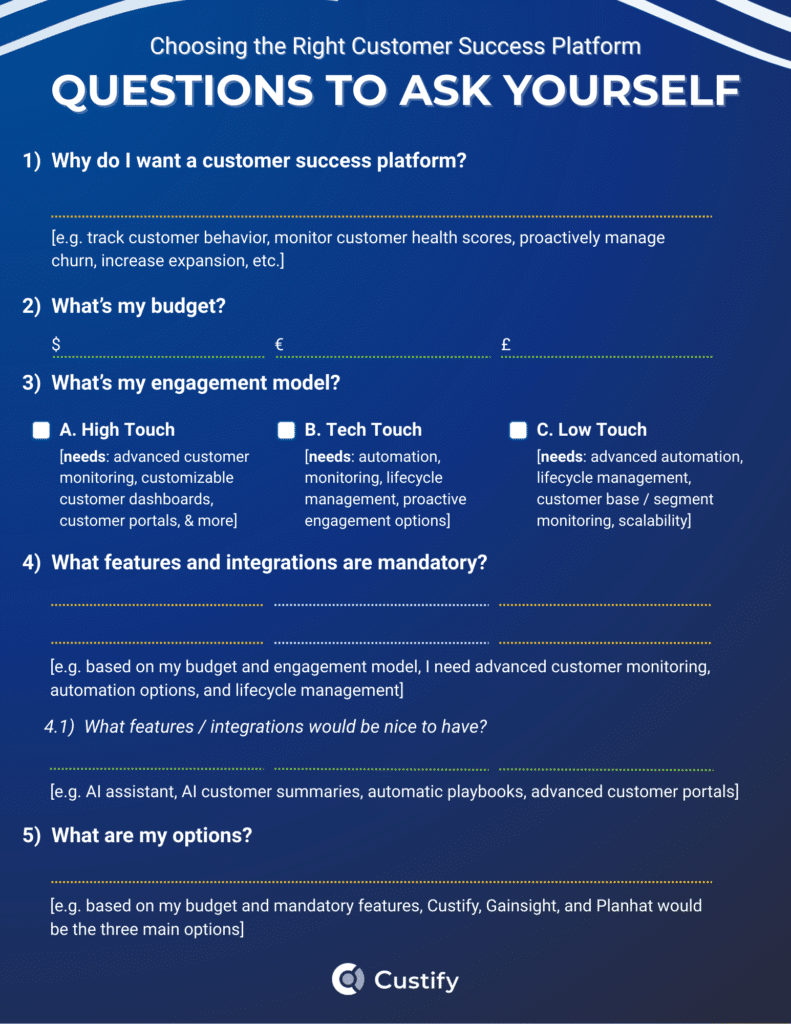
1. Figure out why you need one
Before you pick a customer success platform, you should be very clear on why you need one. As the SaaS space becomes more and more diverse, features you would consider essential may be absent from some tools. Do the appropriate research and write down the reasons why you’re looking to adopt a CSP.
Consider some of the most common reasons:
- Accurately tracking customer behavior in real-time, with the possibility of acting on those data points with speed and accuracy.
- Creating and monitoring customer health scores per account, segment, and for your entire customer base.
- Understanding churn precursors, implementing proactive and AI-powered retention strategies, and increasing customer loyalty.
- Driving expansion through more targeted upsell and cross-sell propositions, and implementing automatic flagging of opportunities.
2. Settle on a budget for the tool
Next, you should figure out how much you’re willing to spend on a CS tool. While many have multiple plans, others allow you to customize your subscription based on your needs, availability, and budget.
Knowing how much you can spend on your customer success platform subscription will help expedite the process. Furthermore, if there are any add-on features you would like, having a preset budget will immediately tell you if you can afford them.
3. Consider your engagement model
A key consideration when choosing customer success software is the level of engagement your customers need. Say you operate a self-service business – your clients might need more automated support, while complex outreach features can take a back seat.
On the other hand, if your customers are bringing in >100K ARR, then you’ll likely need instruments to take better care of those clients.
Let’s look at the features you could probably use for each of the main engagement models:
- High touch. When customers bring in high ARR and need more guidance, you’ll likely opt for a low CSM ratio. To that end, you will need a CSP that can monitor the minutiae of your clients’ product usage, alerting you to even the smallest changes and milestones. You’ll also need complex, customizable customer dashboards that go beyond the basics and allow you to set up precisely what you need to monitor for each account. Lastly, you’ll need advanced customer portals to help during your EBRs / QBRs.
- Tech-touch / mid-touch. When customers bring in less ARR but still require occasional check-ins, it means you’re in a tech-touch or mid-touch engagement scenario. In these cases, you’ll need a CSP with good automation capabilities, lifecycle management, and the ability to track customer activity and proactively identify issues.
- Low touch. In a low-touch environment, the average CSM will have hundreds or even thousands of accounts to monitor. In this case, you’ll need a CSP that can give you an overarching view of customer activity and the ability to see problem accounts at a glance. Automation also continues to play a key role at this stage.
4. Determine what’s mandatory
If you’ve followed the previous points, you should now have:
- A clear goal for your customer success software
- A set budget dictating how much you can spend on the tool
- A well-defined engagement model for when and how much to reach out
All these together should give you a clear picture of the mandatory features you would like in your ideal customer success platform. These are features that you should be able to afford realistically and will require to ensure your customer success team moves with speed and efficiency.
Before moving on to reviewing your CSP options, however, you should also make a list of optional and nice-to-have features that you could add to your CSP in case you can afford it.
Note: This is also the point where you should determine which integrations are essential to ensure your customer success workflows work with maximum efficiency. From CRMs to data warehouses, BI tools, and many others, SaaS tech stacks are ever-growing and ever-changing, so it’s important to make sure you can send data between your tools.
5. Review your options and discuss
Next, it’s time to review your options. By this point, you should have your list of requirements, nice-to-have features, and a clear budget. Now it’s time to review these internally, make any necessary changes, and come up with a full set of questions to ask CSP representatives once you go into demos with them.
- Then turn to the tools available on the customer success platforms market and:
- Use AI to break down your options and do a side-by-side comparison.
- Make a shortlist of the ones that most match your requirements.
- Set up demos with all of the main contenders.
- Compare not just the tools themselves, but how the respective companies handle the demo call and any subsequent interactions.
- If possible, opt for a customer POC with each one of the CSPs you pick.
Lastly, discuss your findings with everyone on your team and all decision makers involved in the process, and settle on an optional customer success solution.
❗️Reminder: You just went through a long, arduous process, and it’s normal to expect the chosen customer success software to work perfectly from the start. That may well happen, but only if you factor in appropriate time for onboarding, implementation, and learning the tool. Lastly, remember to calibrate your expectations – you should be convinced the tool and people you’re choosing to patronize can lead you towards your goals.
Your Customer Success Software Options
| wdt_ID | Criteria | Custify | Gainsight | Planhat |
|---|---|---|---|---|
| 1 | Ideal fit | Startup → Mid‑market (scales to enterprise) | Enterprise / complex orgs (also “Essentials” for growing teams) | Mid‑market → Enterprise |
| 2 | Data model | Product events + CRM/support data | Product usage via Gainsight PX (Product Mapper) + CRM, support, and warehouse/analytics connectors | Unifies CRM, support, product analytics & warehouse telemetry (e.g., Pendo/Amplitude/Mixpanel/Segment; BigQuery/Snowflake) |
| 3 | Health score engine | Weighted measures & segment‑level inputs; AI summaries | Scorecards with weighted measures across dimensions | Flexible health profiles; weighted factors; Success Units (usage‑based or manual) |
| 4 | Automation | Event‑based playbooks; AI‑generated playbooks; | Journey Orchestrator (triggers: health, usage, surveys, lifecycle) | Automations / Workflows (event/schedule/webhook triggers; Projects & Sequences) |
| 5 | Lifecycle management | Custom and built‑in lifecycles (onboarding, adoption, renewal) | Success Plans, Objectives, and journey programs | Journey boards / workflow tracking for onboarding & adoption |
| 6 | QBR / Portals | ✅ Branded, shareable customer portals & dashboards | ✅ Share360 (external read‑only C360 snapshot for customers/partners) | ✅ Branded Customer Portals (share plans, tasks, metrics) |
| 7 | Integrations | 25+ | 36+ | 60+ |
| 8 | Pricing model | Quote (tiered/account‑based) | Quote (Essentials & Enterprise) | Quote (tiers; often unlimited seats) |
| 9 | Notable mentions | Concierge onboarding; fast time‑to‑value | PX adds in‑app analytics & event mapping; broad connector ecosystem | Strong portals & collaboration; flexible automations; deep native integrations |
1. Custify
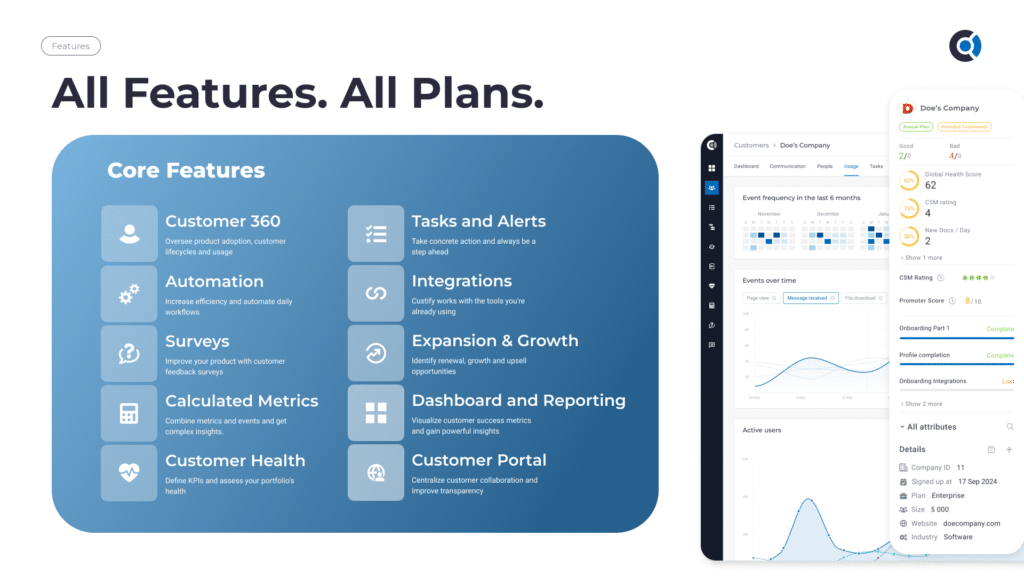
Custify is a customer success software specifically designed so SaaS leaders can manage customer health, prevent churn at scale, and improve customer relationships. The core features of Custify cover most use cases in SaaS, from low-touch to high-touch models and anywhere in between. Custify seamlessly integrates with both your CRM and data warehouse to ensure maximum visibility of all relevant accounts and their metrics.
Ideal for: startups / mid-market SaaS companies
Key Features:
- Customer health scores
- Lifecycle management
- Automation
- Concierge Onboarding (white-glove)
- Automated workflows
- Customer dashboards
- Customer portals
Pricing: Contact sales for more details
2. Gainsight
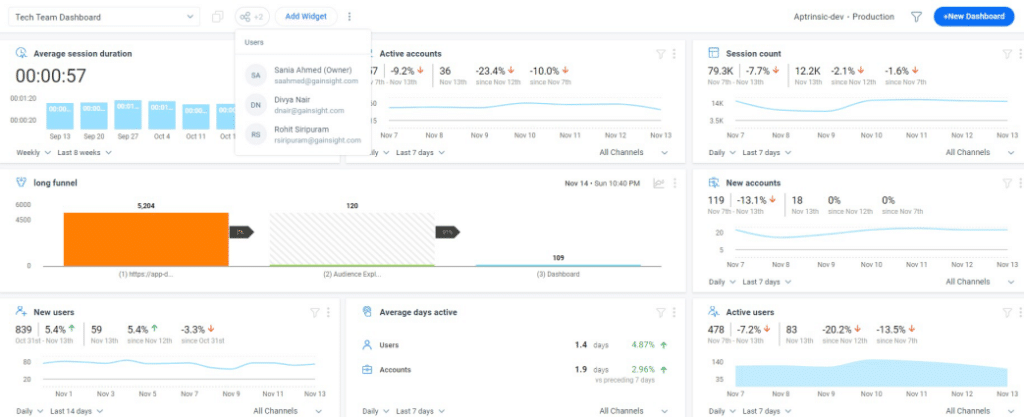
Gainsight is a high-end customer success platform specifically tailored to enterprise customers that require advanced setups. Their platform allows you to track customer health and create centralized dashboards for your assigned clients. However, Gainsight does have a few limitations – specifically, it may be overkill for smaller or even mid-sized companies.
Ideal for: enterprises
Best features:
- Customer health monitoring
- Customer support
- AI-Powered customer engagement
- Customer 360-degree view
Pricing: Available upon request.
3. Planhat
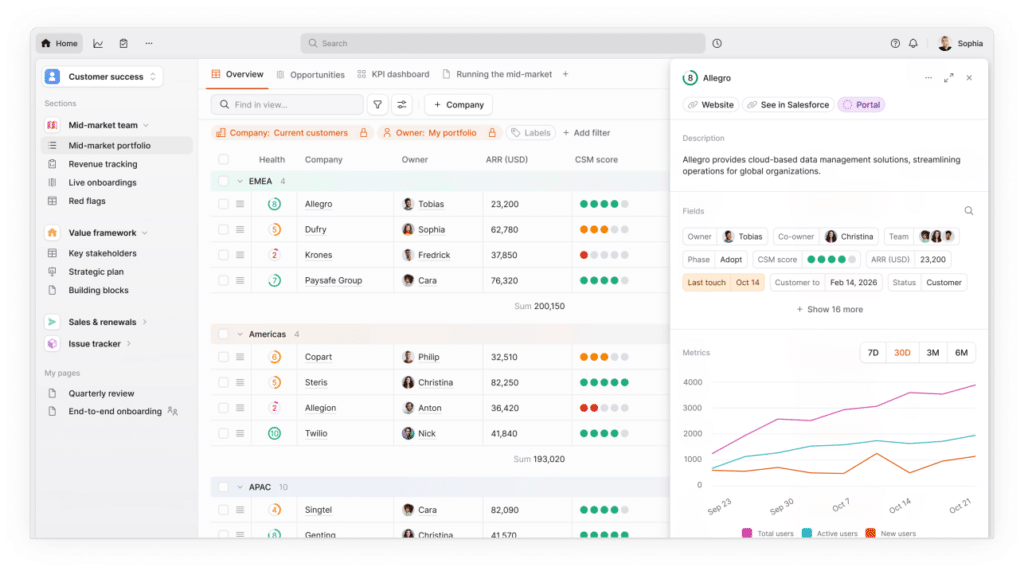
Planhat is a CSP focused on data collection and analysis, allowing CSMs to monitor product usage, automate workflows, set goals, and collaborate with their teammates. Planhat is cited as being slightly difficult to learn and use, but the team provides excellent support that can help move customers past any issues.
Ideal for: mid-market and enterprise companies
Best features:
- Customer portals
- AI automation
- Customer support
- Task management
Pricing: Available upon request.
For more options, see our article on free and paid customer success tools.
FAQs about Choosing Customer Success Software
1. What’s the best customer success platform for startups under $10K budget?
For startups, the best tool is one that balances affordability with automation capabilities and AI. Many platforms can be too enterprise-focused or expensive for small companies.
Multiple independent reviewers and platforms have cited Custify as a great choice for startups. Our custom pricing is affordable while our platform still comes with all the capabilities you expect from a high-level CSP, making it a strong fit for early-stage companies under $10K budget.
Technology startups often adopt Custify to streamline customer success workflows during their growth phase. The platform’s automation and data-driven insights help small teams manage customer relationships effectively while scaling operations.
2. What’s the fastest customer success platform to implement?
Implementation velocity depends on how easily a platform connects to your existing tech stack. Most platforms require a lot of customization, which adds weeks or months to the setup, particularly if you’re left to figure it out on your own or with minimal support.
Custify, on the other hand, integrates quickly with CRMs, analytics, and support tools, making it one of the fastest to get up and running. With our premium concierge onboarding, every Custify client is onboarded in approximately 4 weeks (depending on their requirements for implementation, integrations, and their team’s availability).
3. Which customer success platform works best for B2B tech companies?
As we mostly cater to B2B tech companies, we know the common challenges facing them: multi-touch onboarding flows, complex accounts, revenue retention pressures, and expansion KPIs. The best customer success platform in that case is one that has all the features you would expect (health scores, playbooks, automation, lifecycles, AI, portals), but with the option to customize them to your needs and an assigned CSM that can guide you through the implementation.
Custify covers all of those bases, and our team has extensive experience helping other B2B SaaS CSMs lead the charge in their customer success efforts.
4. How to choose customer success software for a remote team?
A good customer success software for remote teams will include the following features:
- Tasks and alert management systems
- Automation capabilities
- The ability to have multiple users (CSMs)
- The ability to share customer reports, portals, and more
- Integration with remote work tools such as Slack, Microsoft Teams, and others
Fortunately, most CSPs today, including Custify, can handle all of the above and more.
5. ChurnZero vs Totango vs Custify – which platform is best for a mid-market SaaS?
The ideal solution for mid-market SaaS needs to be powerful enough to support automation, customer health tracking, and expansion strategies, but lean enough to implement quickly and use daily. It should also be able to scale along with your business, allowing you to keep growing unimpeded.
Custify fits well into this sweet spot, and many of our clients are already in the mid-market category.
Summing Up
While the options you have are plentiful, few of the ones out there can fully meet your needs. As the SaaS world continues to grow, diversify, and expand, our needs also become more complex.
That’s why I wrote this piece – to help guide your decision-making and hopefully make you carefully consider your needs, budget, and feature requirements.
If you need further help deciding, you can set up a quick call with our team. Together, we can help break through the noise and choose a solution that doesn’t require you to compromise in any way.

